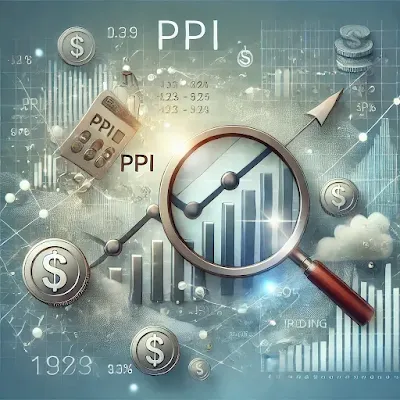PPI, CPI, and Inflation Data: Understanding the Latest Trends in the U.S. Economy
Inflation remains a crucial metric for gauging economic stability, with the Producer Price Index (PPI) and Consumer Price Index (CPI) offering valuable insights into price changes across the economy. Here's a breakdown of the latest data and its implications for markets and monetary policy as of December 2024.
Producer Price Index (PPI): November 2024
The PPI, which measures price changes at the wholesale level, rose by 0.4% in November, surpassing expectations of 0.2%. This marks a 3.0% year-over-year increase, the fastest pace since February 2023. Key highlights include:
- Food Prices Surge: Wholesale food costs jumped by 3.1%, with egg prices soaring by 54.6% due to an avian flu outbreak.
- Service Price Moderation: Service prices increased by 0.2%, with notable declines in airline fares, portfolio management fees, and hotel rates.
Consumer Price Index (CPI): November 2024
The CPI, a measure of consumer-level price changes, rose 0.3% in November, leading to a 2.7% year-over-year increase, slightly higher than October’s 2.6%. Core CPI, excluding volatile food and energy prices, remained steady at 3.3% annually.
- Utility Costs: Utility gas service rose 1.0%, contributing to household expense increases.
- Grocery Prices: Groceries saw a 0.5% uptick, driven by rising costs in meats, poultry, fish, and eggs.
Impact on Monetary Policy
Despite the rise in inflation, markets anticipate a Federal Reserve interest rate cut during the December meeting. With core inflation stabilizing and broader economic growth slowing, the Fed may prioritize supporting the labor market. Analysts predict a quarter-point rate reduction, with market probability nearing 95%.
Regional Inflation Trends
Inflationary pressures vary by region, with New York City experiencing a 4.3% year-over-year rise in consumer prices, outpacing the national average. Higher housing, energy, and food costs are key contributors.
Market Reactions
The stock market has responded positively to inflation data, with the Nasdaq Composite surpassing 20,000 points for the first time. Treasury yields have held steady as investors await the Federal Reserve's policy decisions.
What This Means for You Understanding the PPI and CPI trends can help consumers, businesses, and investors navigate inflationary pressures. Monitoring these indicators provides a clearer picture of economic health and helps anticipate future policy changes.
Stay informed about inflation data and its impact on the U.S. economy for smarter financial decisions.
Next Elon Musk Net Worth: A Closer Look at the World’s Richest Person



Community Rules & Guidelines
1: Do not post email-id or any kind of personal information.
2: Do not post your own blog/website links.
3: For Help & Support use the Contact Us form.